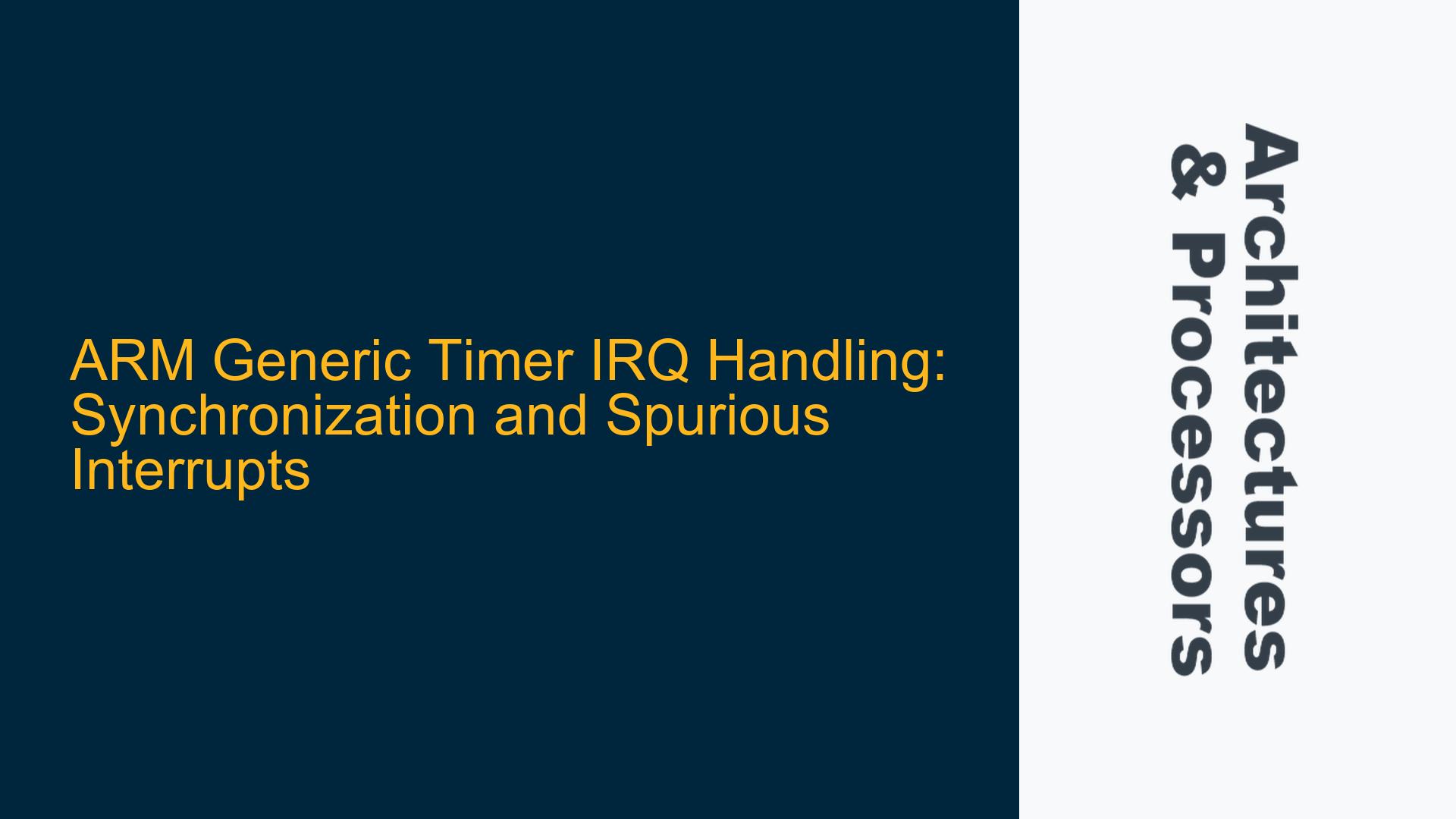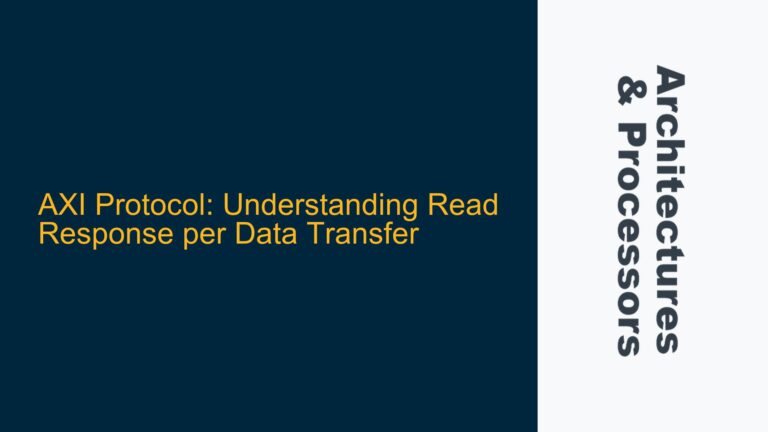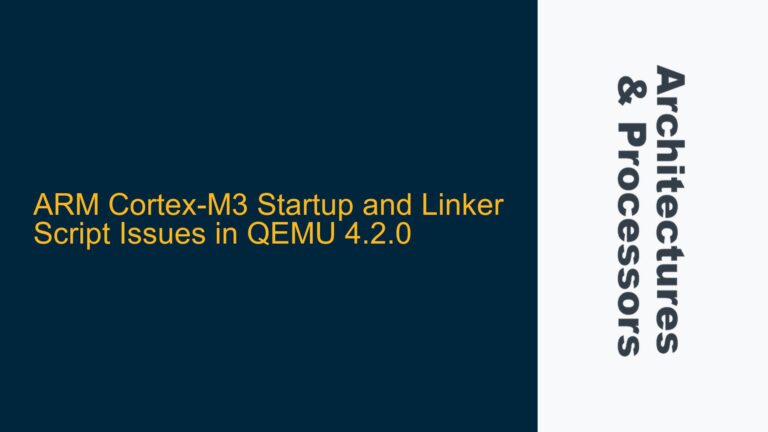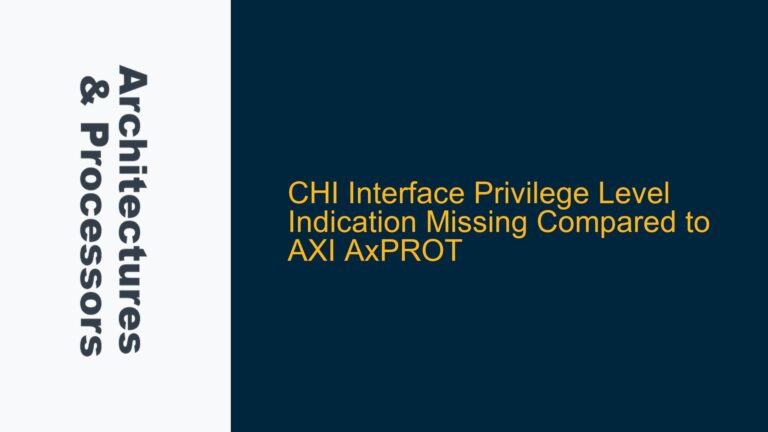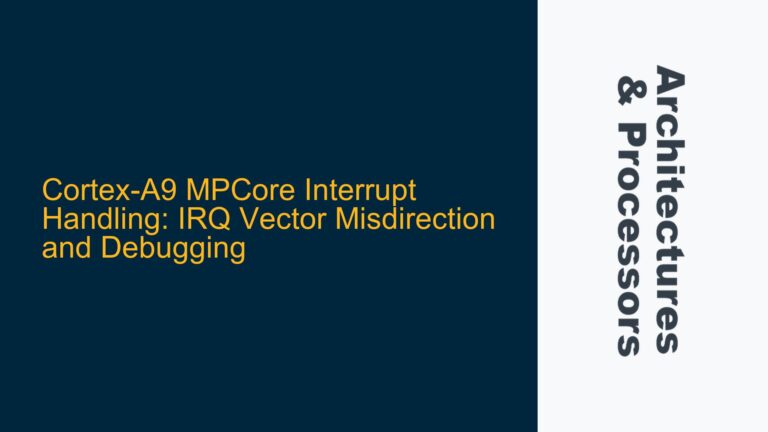ARM Cortex Generic Timer Interrupt Handling and Synchronization Challenges
The ARM Generic Timer is a critical component in ARM-based systems, providing precise timing and interrupt generation capabilities. However, its level-sensitive interrupt behavior introduces subtle synchronization challenges, particularly when dealing with the Generic Interrupt Controller (GIC) and the deactivation of timer interrupts. The core issue revolves around ensuring that the timer interrupt is properly cleared before deactivating it in the GIC to avoid spurious interrupts. This requires a deep understanding of the interaction between the timer registers (TVAL, CVAL), the GIC registers (ICC_EOIR, ICC_DIR), and the synchronization mechanisms (ISB, memory barriers) that ensure correct ordering of operations.
The ARM Generic Timer generates level-sensitive interrupts, meaning the interrupt signal remains asserted until specific conditions are met. These conditions include masking the interrupt (IMASK), disabling the timer (ENABLE), or updating the timer value registers (TVAL or CVAL) to a state where the firing condition is no longer met. When writing an interrupt handler for the Generic Timer, it is crucial to ensure that the interrupt is cleared before deactivating it in the GIC. Failure to do so can result in the GIC re-signaling the same interrupt, leading to spurious interrupts and potential system instability.
The primary concern is the timing and ordering of operations between updating the timer value registers and deactivating the interrupt in the GIC. Specifically, the write to TVAL or CVAL must be globally observed before the deactivation command (ICC_EOIR or ICC_DIR) is issued to the GIC. This requires careful use of synchronization barriers, such as the Instruction Synchronization Barrier (ISB), to ensure that the effects of the write to TVAL or CVAL are visible to the GIC before the deactivation command is executed.
Memory Barrier Omission and Timer-GIC Synchronization Latency
The root cause of spurious interrupts in ARM Generic Timer IRQ handling lies in the omission of proper synchronization barriers and the inherent latency in the propagation of interrupt state changes between the timer and the GIC. When the timer interrupt is triggered, the interrupt signal is asserted, and the GIC updates the interrupt state from Inactive to Pending. The core then takes the exception, reads the Interrupt Acknowledge Register (ICC_IAR), and updates the interrupt state to Active&Pending. At this point, the interrupt handler must clear the timer interrupt by writing to TVAL or CVAL, which deasserts the interrupt signal.
However, without proper synchronization, there is a risk that the deactivation command (ICC_EOIR or ICC_DIR) is issued before the deassertion of the interrupt signal is observed by the GIC. This can result in the GIC re-signaling the interrupt, as the interrupt state may transition from Active&Pending to Pending instead of directly to Inactive. The likelihood of this scenario depends on the latency between the deassertion of the interrupt signal and the propagation of the deactivation command to the GIC.
The ISB instruction plays a critical role in ensuring that the write to TVAL or CVAL is globally observed before the deactivation command is issued. Without the ISB, there is an increased chance that the timer interrupt signal is still asserted when the deactivation command is sent to the GIC. This increases the likelihood of spurious interrupts, as the GIC may not have observed the deassertion of the interrupt signal before processing the deactivation command.
Implementing Data Synchronization Barriers and GIC State Polling
To mitigate the risk of spurious interrupts in ARM Generic Timer IRQ handling, a combination of data synchronization barriers and GIC state polling can be employed. The ISB instruction should be used to ensure that the write to TVAL or CVAL is globally observed before issuing the deactivation command (ICC_EOIR or ICC_DIR). This ensures that the deassertion of the interrupt signal is visible to the GIC before the deactivation command is processed.
In addition to the ISB, software can poll the GIC Redistributor’s Pending State Register (GICR_ISPENDR0) to confirm that the deassertion of the interrupt signal has been observed by the GIC. This provides an additional layer of protection against spurious interrupts, as it allows software to verify that the interrupt state has transitioned to Inactive before proceeding. Polling the GICR_ISPENDR0 register adds a small overhead but significantly reduces the risk of spurious interrupts, especially in systems where timing and latency are critical.
The sequence of operations in the interrupt handler should be as follows: First, the timer interrupt is cleared by writing to TVAL or CVAL. This deasserts the interrupt signal and ensures that the firing condition is no longer met. Next, an ISB instruction is executed to ensure that the write to TVAL or CVAL is globally observed. The GICR_ISPENDR0 register is then polled to confirm that the deassertion of the interrupt signal has been observed by the GIC. Finally, the deactivation command (ICC_EOIR or ICC_DIR) is issued to the GIC, transitioning the interrupt state from Active&Pending to Inactive.
By following this sequence, software can ensure that the timer interrupt is properly cleared and deactivated, minimizing the risk of spurious interrupts. The use of synchronization barriers and GIC state polling provides a robust solution to the synchronization challenges inherent in ARM Generic Timer IRQ handling, ensuring reliable and predictable system behavior.
In summary, the handling of ARM Generic Timer interrupts requires careful attention to synchronization and timing to avoid spurious interrupts. The use of ISB instructions and GIC state polling ensures that the deassertion of the interrupt signal is properly observed by the GIC before the deactivation command is issued. This approach provides a reliable solution to the synchronization challenges in ARM Generic Timer IRQ handling, ensuring robust and predictable system performance.
